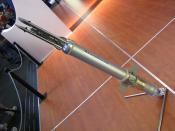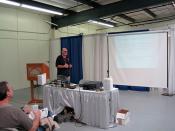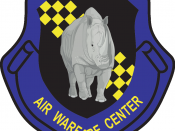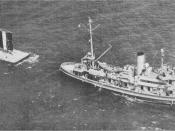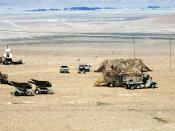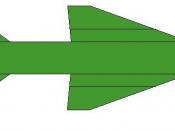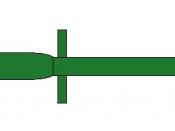An Overview of TBMCS QRP 1. Theater Battle Management Core System Quick Response Package (TBMCS QRP) is an essential resource for today's Joint Strike capabilities. This system allows the United States, NATO, and Coalition Forces to gather and assess intelligence, produce Air Tasking Orders (ATO's) and give the war fighter the necessary tools to achieve the mission. Users from the Operations, Intelligence, and Plans communities all form a team in a Combined Air Operations Center (CAOC) to carry out all facets of any given situation during an air campaign. The following five phases give a brief explanation of the TBMCS QRP and some of it's capabilities.
2. Phase I is the use of a TBMCS QRP which can be deployed and operational within three days. The QRP is used for rapid mobility and requires minimal system resources to allow for a quick setup. System Administrators can deploy with the equipment and have a bare bones system operational, meanwhile setting up the full server suite if necessary.
3. Phase II of the TBMCS QRP setup is the Air Tasking Order (ATO) process. With the ATO being produced three days in advance, our forces are always a step ahead of the enemy and keep them guessing when and where we will strike next. This also allows for changes due to adverse weather conditions, enemy troop movement, or unforeseen problems with aircraft, munitions, or communications.
4. Phase III is the Battle Damage Assment (BDA). During this phase, Intelligence is gathered via recon planes and satellite communications. This Intel is then analyzed to determine structure types and the type of munitions it will take to destroy buildings, communications sites, power plants, and runways. Also, during this phase a new (TNL) Target Nomination List is generated, specifying any new targets or targets that need to be bombed again.
5. Phase IV is used by the Command section to tell the war fighter when the target is supposed to be hit and where the target is located. This is also where decisions are made for retaliatory strikes against weapons such as surface to air missile sites (SAMS), enemy aircraft, or enemy naval forces.
6. This has been a very brief overview of the Theater Battle Management Core System Quick Response Package. Very few computer based systems in the past have had the ability to bring all aspects of Plans, Intelligence, and Operations to the front in one location at the same time, seeing the same picture and achieving the same goal. With the Quick Response Package being a vital resource for today's new Joint Strike war fighter, the mission is being carried out more effectively and with more precision than ever before.
